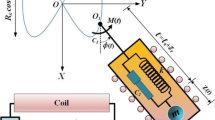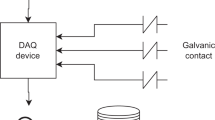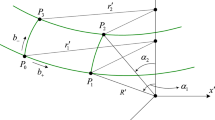Abstract
ELECTRO-TELEGRAPHIC operations for the determination of differences of longitude are usually so arranged as to furnish determinations of the speed of transmission of the electric signals. Each of two stations which are telegraphically connected is provided with a clock, and usually with a chronograph also; thus the clock-times at either station may be registered at will on the chronographs at both stations. The difference between the times indicated by the two clocks at any moment is thus readily ascertained, and two values of it will be obtained, one with the current transmitted in one direction, the other with it transmitted in the opposite direction. The difference between these two values indicates the sum of the speeds in both directions; and half the difference is usually called the “retardation on the line” as it indicates the amount by which every signal, on arrival at its destination, is slow on the time of its inception.
This is a preview of subscription content, access via your institution
Access options
Subscribe to this journal
Receive 51 print issues and online access
$199.00 per year
only $3.90 per issue
Buy this article
- Purchase on SpringerLink
- Instant access to full article PDF
Prices may be subject to local taxes which are calculated during checkout
Similar content being viewed by others
References
See vol. ix. of the "Account of the Operations of the Great Trigonometrical burvey of India." (Dehra Dun, 1883.)
Author information
Authors and Affiliations
Rights and permissions
About this article
Cite this article
WALKER, J. On the Speed of the Electric Transmission of Signals through Submarine Cables and Land Wires . Nature 39, 564 (1889). https://doi.org/10.1038/039564b0
Issue date:
DOI: https://doi.org/10.1038/039564b0



